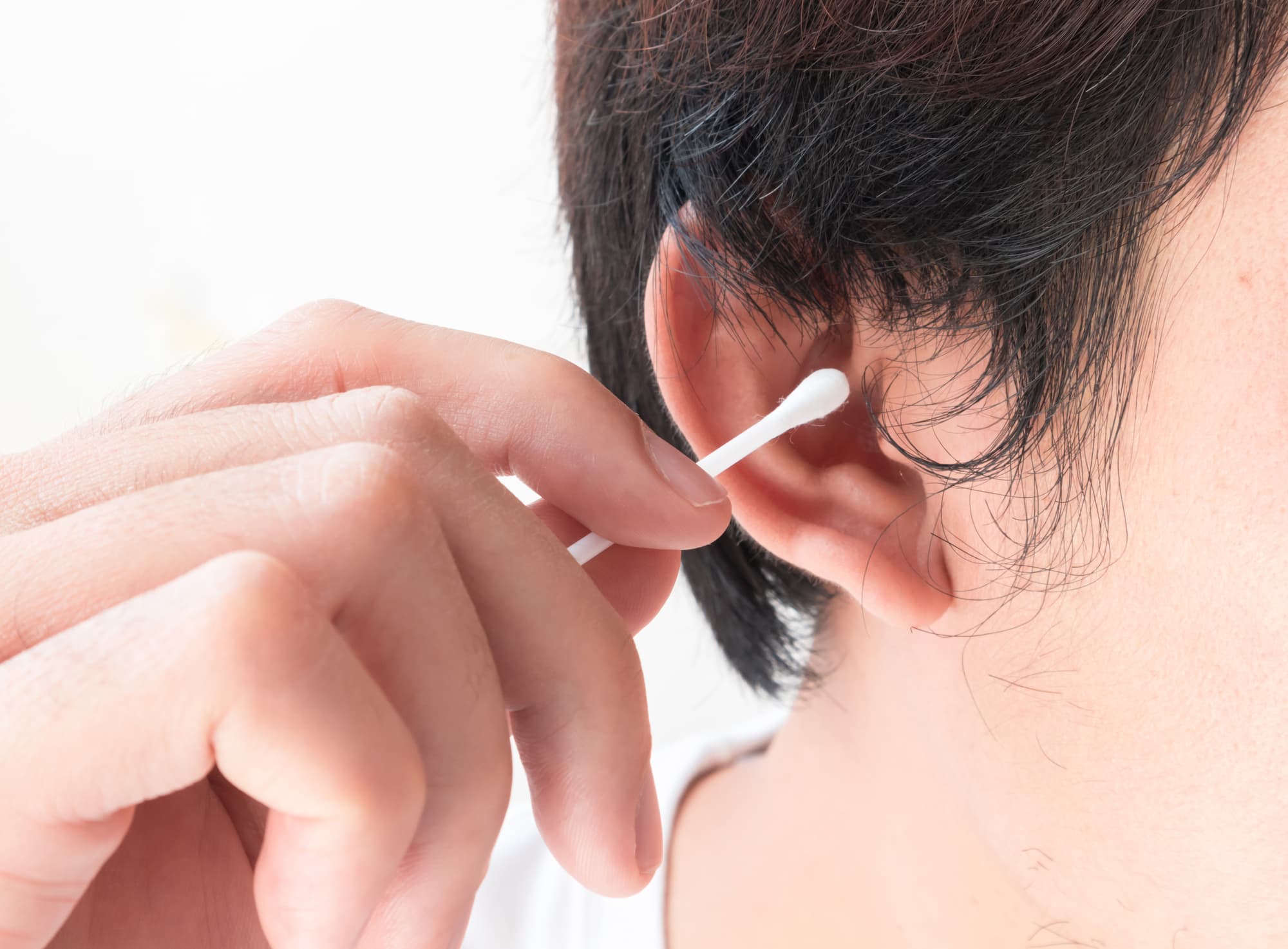Impacted earwax is where wax accumulates in the ear canal to the point where it causes symptoms. Do you wake up with a blocked ear that slowly clears over the morning but blocks again overnight? Is water becoming trapped in your ears after swimming or showering? Are your ears itchy and irritated? Are you having trouble hearing? You may be suffering from impacted ear wax.
Will impacted ear wax fix itself? The short answer is that it is unlikely. While it is true that our ears are self-cleaning, and wax should be carried out of the ear canal naturally, if your ear wax has built up to the point that it is symptomatic, and impacted, you may need a little more help.
Natural Ear Wax Removal
Normally, earwax is carried out of the ear via a self cleaning mechanism; the skin layer lining the eardrum and canal migrates out of the ear much like a conveyer belt, carrying the wax with it. This, combined with movement of the soft outer part of the ear through chewing and talking allows the wax to either fall out of the ear, or be wiped away as it reaches the external ear. For a variety of reasons, this self-cleaning method can be disrupted, and this is where the wax can become impacted and hence problematic.
Causes of Ear Wax Impaction
Excessive or impacted wax affects one in 10 children and one in 20 adults. Furthermore, it affects over a third of geriatric and developmentally delayed populations.
There are many factors which may contribute to your ears overproducing wax. Some of the most common causes of ear wax impaction include:
- The use of cotton tips and other items to remove superficial wax
- Wearing hearing aids, or using earplugs frequently
- Working in a dusty or dirty environments
- Stress
- Genetics – some people overproduce earwax
- Having narrow, curvy or hairy ear canals
- Surfing or swimming in cold water
If you’re prone to excessive wax production, how often you suffer from blocked ears will vary from person to person. However, if you wear hearing aids, it is recommended that you have your wax professionally removed every three to six months not only for your comfort, but to also protect your hearing aids from being damaged.
Impacted Ear Wax Removal Tools and Techniques
If the self-cleaning process doesn’t work to remove impacted ear wax, you may be wondering what you can do to gain relief from your blocked ear. A lot of people’s instinct is to reach for the cotton buds, but you should never use any objects to try and scoop wax out of your ear. It doesn’t matter if it’s a cotton tip bud, a finger, a bobby pin or anything else, you should never stick anything into the ear canal. Whilst you may remove a small amount of wax, you may also make the impaction worse by pushing wax further down the canal, worsening your symptoms.
More and more people are also attempting ear candling as a method of unblocking their ears however; the evidence tells us it is ineffective and potentially dangerous. One principle piece of literature on ear candling found that any melted wax seen at the base of the ear candle following use is the wax from the candle itself, not ear wax 1.
If you have made an appointment to have your ear wax professionally removed but are desperate for some relief, ear wax softening drops can provide you with a temporary solution. Ear wax softening drops, normally purchased from your local chemist, are used to both soften and disintegrate the wax buildup within your ear canal. To perform this treatment, purchase the recommended drops and use as instructed. It is better to lay down on your side to administer the drops; this ensures the drops actually reach the wax, particularly if the wax is sitting deep in the canal. Wait for five minutes on your side to allow the drops to penetrate, or do this before bed at night to allow them to seep into the wax overnight while you are laying down. This treatment is only suitable if you don’t have a perforated eardrum, which is why professional advice is recommended prior.
These drops do not necessarily completely get rid of the blockage but may create a gap which will provide you with some temporary relief from the symptoms of a blocked ear. This gap can quickly be filled up though, which is why a follow up appointment at Earworx for assessment can be beneficial.
The Impacted Ear Wax Removal Method You Can Rely On
Undoubtedly the most reliable and effective method of ear wax removal is micro-suction. It is the technique used at Earworx and is also the method preferred by ENT specialists. Unlike other removal techniques, micro-suction is performed under direct observation and is also a dry method; this means that it is safe and effective and suitable for almost everyone (including people with perforated eardrums).
The micro-suction procedure involves a small micro-suction catheter being inserted directly into the ear canal. This catheter is attached to suction tubing which will then gently suck out the built-up wax – much like a mini vacuum. The entire procedure is carefully observed by a registered nurse using loupes, which are magnifying glasses fitted with a bright light. The registered nurse talks you through the process and once the procedure is complete, provides you with some education around preventing future build up.
The procedure only takes about half an hour and you will leave Earworx free of blocked ears.
1. Seely DR, Quigley SM, Langman AW. Ear candles: efficacy and safety. Laryngoscope. 1996;106:1226-1229





